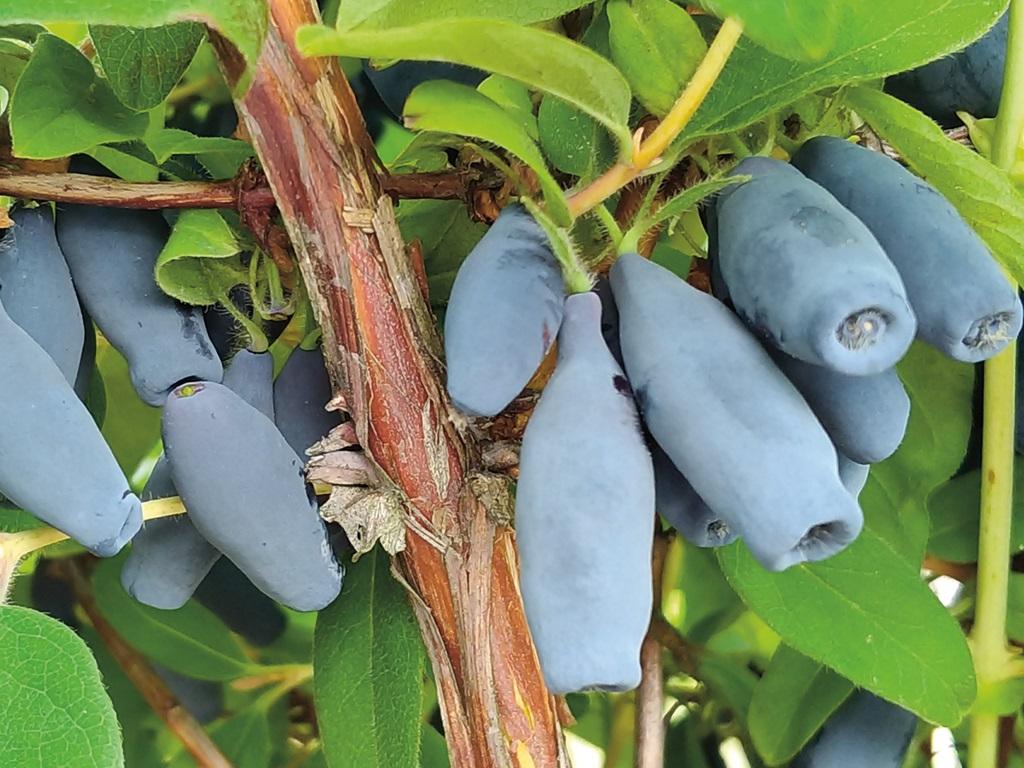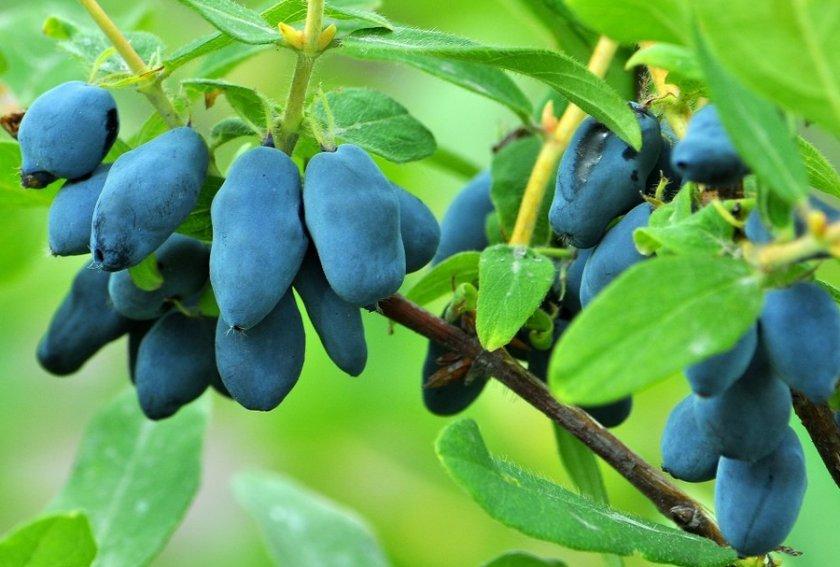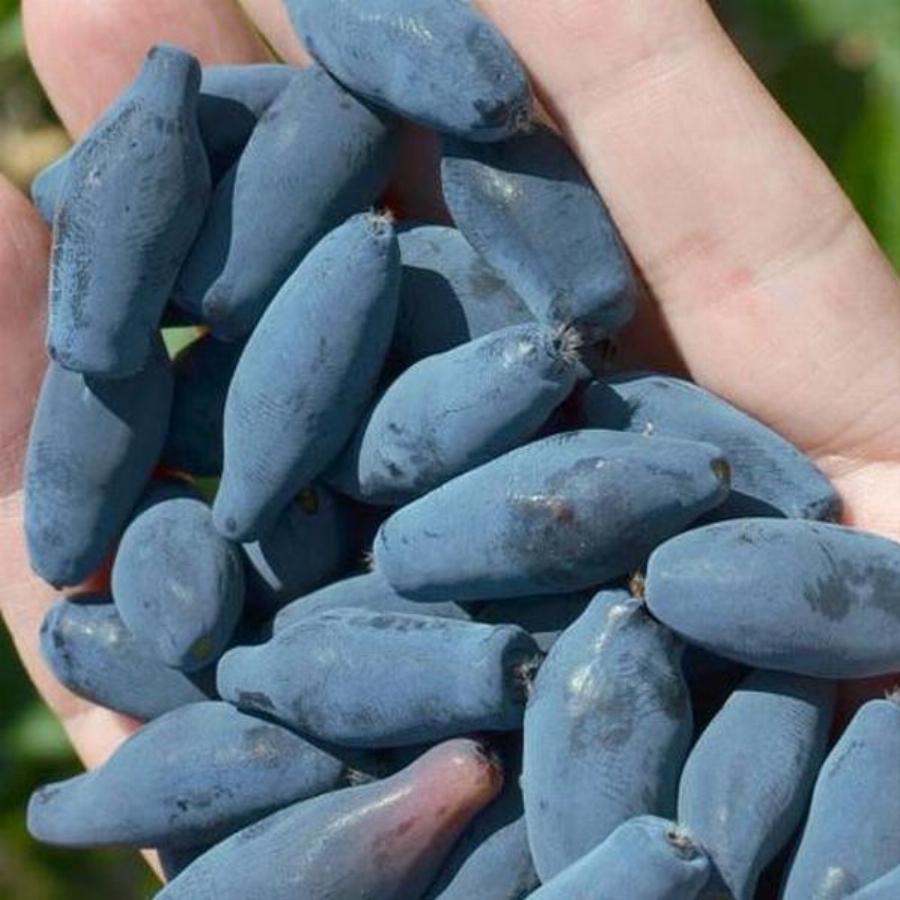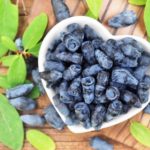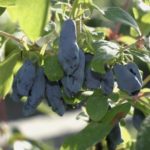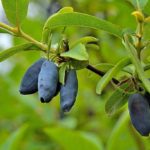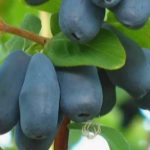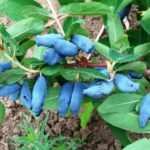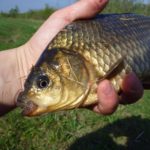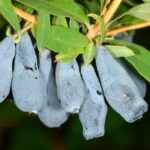Many summer residents are interested in the description of the honeysuckle variety Delight, its planting and care. This plant is highly resistant to frost and undemanding in compliance with the rules of agricultural technology. The crop also bears tasty and healthy fruits and is characterized by stable fruiting. In order for the plant to develop normally and have strong immunity, certain rules must still be followed.
History and description of the variety
The variety was obtained at the Federal State Unitary Enterprise "Bakcharskoye". Its authors are Savinkova and Gagarkin.State plant variety trials were carried out in 2012. At the same time, the culture entered the State Register in 2020.
Honeysuckle of this variety is characterized by medium-sized bushes, the height of which is 1.7-1.9 meters. They are distinguished by a rounded crown, the diameter of which reaches 1-1.5 meters. Honeysuckle is distinguished by straight, hairless shoots of a light green color. Older branches are brown and slightly curved near the base.
The plant has green foliage covered with a waxy coating. It has an oval shape and an opposite arrangement. The leaves reach 3-8 centimeters in length and 1-3 centimeters in width. The leaf plates have a smooth matte surface. During the flowering period, honeysuckle is decorated with yellow-white flowers, the length of which is 1.2-1.6 centimeters.
Description of fruits
During fruiting, pod-shaped or spindle-shaped berries appear on the bushes. Their length reaches 3-4 centimeters, and their diameter is 1.5. The weight of the fruit is 1.4-3 grams. Honeysuckle berries have blue skin covered with a waxy coating. Inside there is quite elastic juicy pulp with a slight aroma. The fruits are easy to transport and have a good presentation.
Taste qualities
Delight honeysuckle berries are characterized by a harmonious sweet and sour taste without bitterness. The sugar content in the fruit is 8.5%, and the acid content is 2.6%. According to the tasting scale, the berries were rated 4.8 points.
Productivity features
Fruiting of honeysuckle Delight begins in the 3rd year of life. Subsequently, the plant produces a harvest every year. The culture is characterized by an early ripening period - approximately in the tenth day of June. At the same time, the fruits ripen at the same time. An undoubted advantage is the low shedding of berries. This figure does not exceed 20%.The fruits need to be collected when they acquire a dark blue color. This can be done manually or mechanically.
From 1 bush, 3 years old, you can get approximately 1.5 kilograms of fruit. In favorable conditions, it will be possible to collect 5.5 kilograms of berries from an adult bush.
Distribution area
It is recommended to grow this variety in Western Siberia. It can also be planted in the Urals and in the middle zone. However, in these regions, honeysuckle may suffer from prolonged winter thaws. It is important to consider that the Vostorg variety cannot be planted in the northwestern regions of European Russia.
Growing and care features
The hybrid variety Delight is considered undemanding to care. Therefore, even novice gardeners can cope with its cultivation. In this case, several features should be taken into account.
In order for the Delight variety to bring a good harvest, when choosing a site for planting, it is recommended to take into account the following features:
- good lighting;
- presence of wind protection;
- the occurrence of groundwater at a level not higher than 1 meter;
- neutral or slightly acidic soil.
When planting honeysuckle, it is recommended to consider the following features:
- Prepare the recess in advance. Its size must be at least 40 centimeters. Specific parameters depend on the roots.
- Place drainage on the bottom. For this you can use branches, bark, stones.
- Add 2 buckets of compost, 1 liter jar of wood ash and 3 tablespoons of superphosphate to the soil.
- Fill the hole with water and make a mound in the center.
- Place the seedling in the center and carefully straighten the root system. It is important to ensure that the root collar is not deepened by more than 5-6 centimeters.
- Add soil and water the plant again. This will help compact the soil and get rid of air pockets.
- Cover the tree trunk circle with a mulch layer.
In order for honeysuckle to bear a good harvest, it is important to provide it with quality care. The Delight variety prefers fairly abundant watering. Moisture deficiency will negatively affect the taste of the fruit and lead to a decrease in its size. Also, a noticeable bitterness may appear in the berries. It is recommended to water the bushes throughout the growing season. It is important to take into account that the crop does not tolerate waterlogging.
If nutrients were used when planting the plant, honeysuckle does not require special feeding for 2 years. In the third year, organic fertilizers must be applied to each bush. Honeysuckle perfectly takes infusion of chicken droppings, fermented grass or mullein.
It is necessary to add nutrients in the spring - before the buds swell. It is also recommended to fertilize the plant during the flowering period and in the fall - after the leaves fall. It is important to consider that honeysuckle responds well to the addition of wood ash. It should be used at the stage of ovary formation.
Much attention should be paid to pruning bushes. It is important to consider that the formation of fruit buds occurs on young shoots. Therefore, it is not recommended to shorten them. Each adult honeysuckle bush should have no more than 18 skeletal branches. Excess shoots are removed in September.
Most often, the fruiting of a crop decreases from the age of 15. To maintain productivity, rejuvenating pruning is carried out.To do this, you need to cut off all growing branches into stumps in the summer. Soon young branches will grow there, which will bear fruit next year.
Disease and pest control
The Delight variety is resistant to diseases and pests. However, if the rules of care are violated, some problems may arise. Of the pests, the plant is more susceptible to attacks by scale insects, aphids, and mites. Leaf-eating parasites – leaf miner larvae and sawfly caterpillars – also pose a great danger to the crop. To cope with pests, you need to use acaricides and insecticides. Among them, it is worth highlighting “Aktellik”, “Envidor”, “Confidor”.
If the rules of agricultural technology are violated, the plant often suffers from fungal infections. The greatest danger to the crop is powdery mildew, ramularia, and cercospora. When pathologies develop, it is necessary to use fungicidal substances - “Fundazol”, “Topaz”, “Fitosporin”. You can also treat plantings with iron or copper sulfate.
To avoid the development of pathologies, the bush must be systematically pruned. This ensures complete air circulation. In this case, the remaining plant debris must be taken outside the site and burned.
Preparing for cold weather
The culture is considered quite frost-resistant. Its flower buds are able to withstand even short spring frosts. There is no need to cover the bushes for the winter. It is enough to tie them to pegs and cover them with pine spruce branches to protect them from mice and snow.
At the stage of preparing honeysuckle for winter, it is necessary to add potassium and phosphorus substances. However, you cannot use nitrogen fertilizers at this time, since there is a risk of new shoots developing.
Honeysuckle Delight is a fairly popular crop. It is unpretentious and produces tasty fruits. However, to obtain a bountiful harvest, it is still necessary to follow some rules of agricultural technology.

